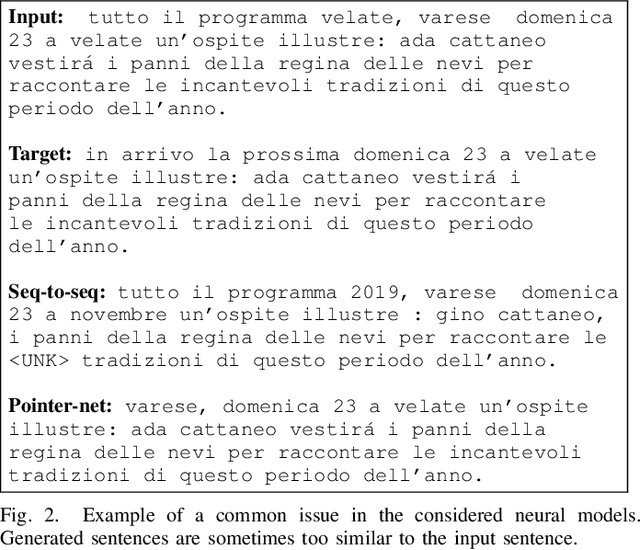Antonio Trevisi
A novel integrated industrial approach with cobots in the age of industry 4.0 through conversational interaction and computer vision
Feb 16, 2024Abstract:From robots that replace workers to robots that serve as helpful colleagues, the field of robotic automation is experiencing a new trend that represents a huge challenge for component manufacturers. The contribution starts from an innovative vision that sees an ever closer collaboration between Cobot, able to do a specific physical job with precision, the AI world, able to analyze information and support the decision-making process, and the man able to have a strategic vision of the future.
Neural paraphrasing by automatically crawled and aligned sentence pairs
Feb 16, 2024

Abstract:Paraphrasing is the task of re-writing an input text using other words, without altering the meaning of the original content. Conversational systems can exploit automatic paraphrasing to make the conversation more natural, e.g., talking about a certain topic using different paraphrases in different time instants. Recently, the task of automatically generating paraphrases has been approached in the context of Natural Language Generation (NLG). While many existing systems simply consist in rule-based models, the recent success of the Deep Neural Networks in several NLG tasks naturally suggests the possibility of exploiting such networks for generating paraphrases. However, the main obstacle toward neural-network-based paraphrasing is the lack of large datasets with aligned pairs of sentences and paraphrases, that are needed to efficiently train the neural models. In this paper we present a method for the automatic generation of large aligned corpora, that is based on the assumption that news and blog websites talk about the same events using different narrative styles. We propose a similarity search procedure with linguistic constraints that, given a reference sentence, is able to locate the most similar candidate paraphrases out from millions of indexed sentences. The data generation process is evaluated in the case of the Italian language, performing experiments using pointer-based deep neural architectures.
* The 6th International Conference on Social Networks Analysis, Management and Security (SNAMS 2019)
 Add to Chrome
Add to Chrome Add to Firefox
Add to Firefox Add to Edge
Add to Edge